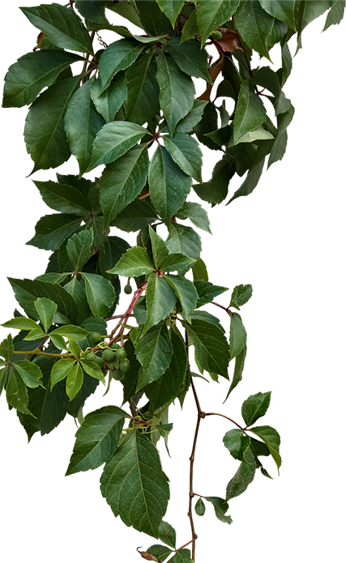
21
Jun
Best Vegetables for Indoor Farming in New Zealand: Grow Fresh Produce Year-Round
With rising food costs, limited outdoor space, and an increased focus on sustainability, more New Zealanders are turning to indoor vegetable farming to grow their own fresh produce. Whether you’re living in a compact Auckland apartment or managing a smart indoor farm in Wellington, the good news is—you can successfully grow a wide variety of vegetables indoors. Thanks to modern techniques like hydroponics, LED grow lights, and vertical farming systems, growing vegetables indoors in New Zealand is easier and more productive than ever. In this detailed guide, we’ll cover the best vegetables to grow indoors, how to set up a productive system, and tips for year-round harvesting in Aotearoa. Why Indoor Vegetable Farming Is Gaining Popularity in New Zealand New Zealanders are increasingly choosing to grow food at home due to: Rising grocery prices Limited garden space in urban areas Unpredictable outdoor weather Desire for pesticide-free produce Interest in sustainable and local food systems Indoor farming provides complete control over temperature, light, water, and nutrients, allowing you to grow vegetables year-round—even during chilly winters or rainy seasons. Top Benefits of Growing Vegetables Indoors in NZ ✅ Fresh produce year-round ✅ No need for large outdoor gardens ✅ Fewer pests and diseases ✅ Faster harvest cycles ✅ Better water efficiency with hydroponics ✅ Environmentally friendly and space-saving Top 10 Vegetables to Grow Indoors in New Zealand 1. Lettuce ✅ Type: Loose-leaf or romaine varieties ✅ Light: 10–12 hours per day (use LED grow lights) ✅ Growth Time: 30–40 days ✅ Best For: Beginners, hydroponics, windowsills Lettuce is the most beginner-friendly indoor crop. It grows quickly, requires little space, and thrives in cool indoor environments. 2. Spinach ✅ Type: Baby spinach or New Zealand spinach ✅ Light: 10–12 hours/day ✅ Growth Time: 35–50 days ✅ Best For: Containers or vertical trays Spinach grows fast indoors, especially in cooler South Island homes. Rich in iron and versatile for salads or cooking. 3. Cherry Tomatoes ✅ Type: Dwarf or patio varieties ✅ Light: 12–14 hours/day (essential) ✅ Growth Time: 60–80 days ✅ Best For: Warm indoor spaces, grow tents Cherry tomatoes are compact, prolific, and ideal for indoor trellising. Ensure proper pollination and light exposure for fruiting. 4. Capsicum (Bell Peppers) ✅ Type: Mini bell or snacking varieties ✅ Light: 12–14 hours/day ✅ Growth Time: 60–90 days ✅ Best For: Greenhouses, containers with LED support Peppers love warmth and light. Indoors, they thrive in controlled environments and add vibrant colour and crunch to meals. 5. Radishes ✅ Type: Cherry Belle, French Breakfast ✅ Light: 8–10 hours/day ✅ Growth Time: 25–30 days ✅ Best For: Quick harvests, beginners Radishes are the fastest-growing indoor crop. Their short growth cycle makes them perfect for small-space or rotation planting. 6. Carrots (Mini Varieties) ✅ Type: Thumbelina, Little Finger ✅ Light: 10–12 hours/day ✅ Growth Time: 60–75 days ✅ Best For: Deep containers with loose soil Carrots need depth but not width. Choose smaller types and ensure the soil is free-draining and well-aerated. 7. Herbs (Basil, Parsley, Coriander, Mint) ✅ Light: 8–12 hours/day ✅ Growth Time: 30–50 days ✅ Best For: Windowsills, hydroponic kits While technically not vegetables, herbs are a must-have for every indoor gardener in NZ. They’re aromatic, space-efficient, and high-yielding. 8. Green Beans ✅ Type: Bush beans (compact variety) ✅ Light: 10–12 hours/day ✅ Growth Time: 45–60 days ✅ Best For: Trellised containers, warm rooms Beans can grow indoors with support poles. They’re high in protein and produce multiple harvests if maintained well. 9. Spring Onions ✅ Light: 8–10 hours/day ✅ Growth Time: 30–40 days ✅ Best For: Recycled containers, small pots Scallions or spring onions are low-maintenance and regrow quickly. Ideal for small spaces or as a cut-and-come-again crop. 10. Kale ✅ Light: 10–12 hours/day ✅ Growth Time: 50–70 days ✅ Best For: Winter indoor gardens, hydroponic trays Kale is a cool-loving green that thrives in NZ homes year-round, particularly during the colder months. Best Growing Methods for Indoor Vegetables 🌱 1. Soil-Based Containers Use organic potting mix, choose pots with drainage holes, and water consistently. Best for carrots, spinach, and kale. 💧 2. Hydroponic Systems NFT (Nutrient Film Technique), Kratky, or Deep Water Culture setups are excellent for lettuce, herbs, and leafy greens. 🌿 3. Vertical Farming Racks Maximize vertical space with tiered trays and LED grow lights. Perfect for greens, herbs, and compact vegetables. Essential Equipment for Indoor Vegetable Farming Full-spectrum LED grow lights (10–14 hrs daily) pH & EC meters (especially for hydroponics) Timers for lighting automation Ventilation or airflow fans Smart irrigation kits or manual spray bottles Moisture meters to avoid overwatering Indoor Vegetable Farming Tips for New Zealand Conditions 🌤 Adjust light hours in winter when daylight is limited 🌡 Keep temperature between 18–24°C for most vegetables 🐛 Watch for pests like whiteflies or aphids—use neem oil if needed 🚿 Water early in the day to avoid fungal growth ♻️ Compost kitchen waste to make your own organic fertiliser 🌿 Harvest often to promote regrowth (especially leafy greens) Challenges & Solutions Challenge Solution Lack of sunlight Use full-spectrum LED grow lights (NZ retailers like Growlight NZ) Overwatering Use moisture meters or bottom watering method Space constraints Opt for dwarf or compact vegetable varieties Slow growth in winter Increase grow light hours and maintain indoor warmth Nutrient imbalance Use hydroponic nutrient blends specific to vegetable types Where to Buy Indoor Gardening Supplies in NZ Growlight.co.nz – for high-efficiency LED grow lights Bunnings NZ – pots, soil, grow kits Palmers Garden Centres – seeds and vegetable starts Hydroponic stores in Auckland, Christchurch, Wellington Online retailers – Trade Me, Mitre 10, Kings Plant Barn Sustainable Practices for Indoor Farmers in New Zealand Reuse yogurt containers, milk bottles as pots Use organic NZ-certified seeds Implement water-saving hydroponic systems Avoid chemical fertilisers—opt for fish emulsion or worm tea Use solar-powered fans or low-energy lights Conclusion Indoor vegetable farming is one of the smartest and most sustainable choices a New Zealander can make. Whether you’re a beginner or experienced gardener, the ability to grow your




